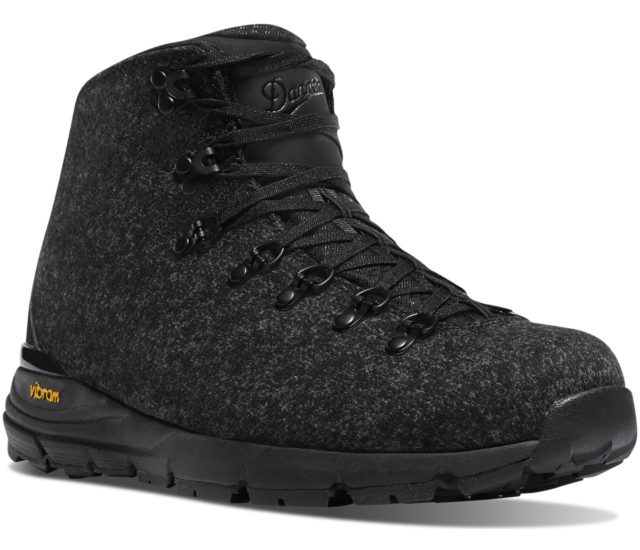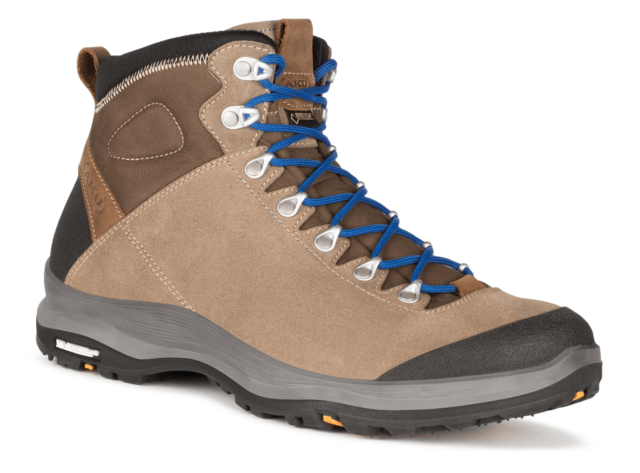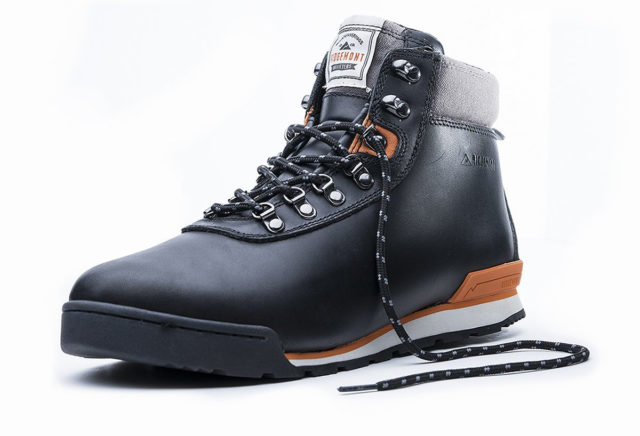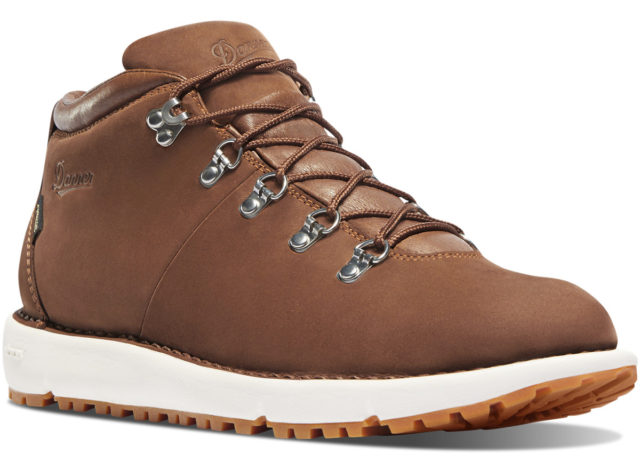Lots of companies now make some casual-looking boots that are also designed to handle quick day hikes and outdoor activities. So, we’ve put together a group of some of our favorites options in this category, and detail below what makes each boot stand out from the others.
Danner Mountain 600 EnduroWeave
Size Tested: 9
Blister’s Measured Weight per Boot: 482 grams

Luke Koppa: The Mountain 600 EnduroWeave definitely stands out from the other options here due to its breathability, and that’s all due to its upper material. Made of a tightly woven textile, the upper breathes significantly better than the leather options here, making the Mountain 600 EnduroWeave a good option for warmer temps and milder weather. Its Vibram SPE midsole is light, supportive, and fairly plush. The Vibram Fuga outsole is one of the more aggressive options in this roundup, and provides very good grip on slick surfaces and in mud. However, since it lacks a waterproof laminate, the Mountain 600 EnduroWeave isn’t the best option for splashing through puddles. But for warm summer hikes or nights out, the Mountain 600 EnduroWeave is a sharp-looking and still very trail-capable boot.
For sizing, Danner recommended that we downsize a ½ size from our regular shoe size for Danner’s lifestyle and hike models. So, I wore the Mountain 600 EnduroWeave in a size 9, rather than my usual size 9.5. The size 9 Mountain 600 EnduroWeave was comfortable, though a bit narrower than I’d prefer (I have fairly wide feet). Compared to the Tramline 917, the Mountain 600 feels slightly narrower, and Sam Shaheen found both size 9 Danner boots comfortable for his size 8.5 foot. Long story short, we’d recommend trying these boots on to see what size would work best for your foot.
Aku La Val GTX
Size tested: 10.5
Blister’s Measured Weight per Boot: 621 grams

Jonathan Ellsworth: The La Val GTX is the burliest boot in our roundup, and the best option for very wet environments or hiking with heavier loads. In short, this is the “least casual” / most hiking-oriented boot in our roundup, with good traction on wet rock or loose dirt, good ankle support, and your feet will stay dry in sustained downpours.
Ridgemont Heritage
Size tested: 9.5
Blister’s Measured Weight per Boot: 570 grams

Luke: The Ridgemont Heritage is one of the burliest and most supportive boots in this roundup, but looks much less techy than other hiking-oriented options like the Aku La Val GTX. Featuring a classic, vintage-mountaineering aesthetic, the Heritage definitely looks at home when walking around town. However, the stiffer EVA midsole, increased arch support, and moderately lugged rubber sole still make it a solid option for quick hikes. Overall, the Heritage feels a bit heftier than all the other boots here, apart from the Aku La Val. The Heritage would be my choice for cooler-weather outings where its thick leather upper and waterproof lining would be a plus. The Heritage isn’t my top pick for warmer, drier weather, but for fall, winter, and early spring, it’s great.
In terms of fit, the Heritage falls on the narrower end. I wore it in my normal shoe size of 9.5, and felt that it was a bit too narrow for my fairly wide foot (and a bit narrower than the two Danner boots). But people with narrower feet will likely enjoy the snug, secure fit of the Heritage.
Danner Tramline 917
Size Tested: 9
Blister’s Measured Weight per Boot: 450 grams

Sam Shaheen: The Danner Tramline 917 is probably the most casual-looking boot here, so if you’re looking for a boot that can handle short hikes but don’t want to look like you’re about to hit the trail, this is a great option.
Two things really jumped out at me when I first got the Tramline 917. First, this boot is surprisingly light. It may have classic styling cues from boots of a bygone era, but it doesn’t share their clunky feel. The Tramline 917 utilizes modern materials and construction techniques that makes for a comfortable, supportive boot without feeling bulky. Second, the Tramline 917 looks great. It doesn’t overdo the retro styling with huge sole lugs or an overbuilt upper, but has a simple, paired down, and classic look that feels suitable in many situations: from a casual workplace to a night out — or even the trail (as long as your pack isn’t too heavy — there isn’t much ankle support).
My only complaint about the Tramline 917 is the Gore-Tex liner. Especially for a boot that I wear 90% of the time around town, the Gore-Tex liner makes my foot sweat far more than other casual shoes and boots I own that don’t have waterproof liners. As a result, I tend to only wear the Tramline 917 on colder days. This definitely isn’t a warm-weather boot.
When it comes to sizing, the Tramline 917 feels pretty true to size. I normally wear a size 8.5, and the size 9 Tramline 917 has a bit of extra room, but for a casual boot, that’s about right. I think the size 8.5 would still be fine, but have a more precise fit.
Xero DayLite Hiker
Size tested: 11.5
Blister’s Measured Weight per Boot: 330 grams

Jonathan: For those who aren’t into heavier, burlier boots, the DayLite Hiker is an excellent more-minimalist option. It is much softer and much more flexible than all of the other boots in this group, and it offers the most ground feel — by far. It is a zero-drop hiking boot that ought to be on the radar for anyone who is curious about or already convinced that zero-drop shoes are the way to go. And if you’re looking for an even more minimal feel, the shoe is designed to work well without the included insole. Don’t expect your feet to stay dry in sustained rains, but if you are looking for a “less is more” hiking shoe, the DayLite Hiker should be on your radar.
Note re: sizing — Xero recommends going 1 full size up from your normal size. I usually wear a size 10.5 street shoe, so I went with a size 11.5 DayLite Hiker. And given that I tend to wear very thin socks, I think I could have probably gotten away with going just a ½ size up. The size 11.5 fits me fine, but it is definitely a roomy fit.
